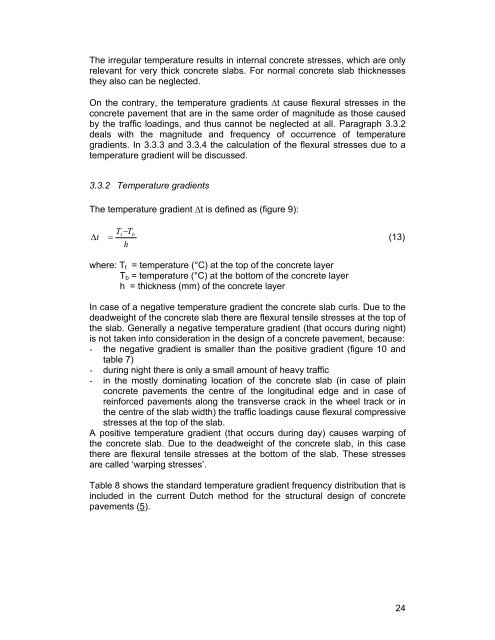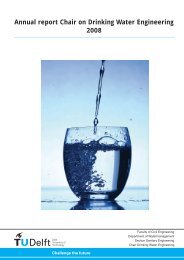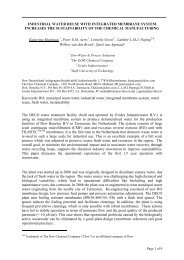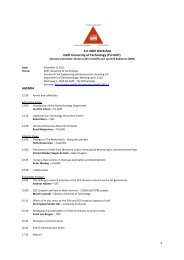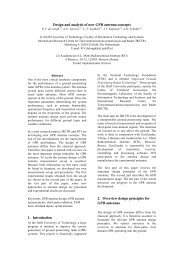CT4860 STRUCTURAL DESIGN OF PAVEMENTS
CT4860 STRUCTURAL DESIGN OF PAVEMENTS
CT4860 STRUCTURAL DESIGN OF PAVEMENTS
Create successful ePaper yourself
Turn your PDF publications into a flip-book with our unique Google optimized e-Paper software.
The irregular temperature results in internal concrete stresses, which are only<br />
relevant for very thick concrete slabs. For normal concrete slab thicknesses<br />
they also can be neglected.<br />
On the contrary, the temperature gradients ∆t cause flexural stresses in the<br />
concrete pavement that are in the same order of magnitude as those caused<br />
by the traffic loadings, and thus cannot be neglected at all. Paragraph 3.3.2<br />
deals with the magnitude and frequency of occurrence of temperature<br />
gradients. In 3.3.3 and 3.3.4 the calculation of the flexural stresses due to a<br />
temperature gradient will be discussed.<br />
3.3.2 Temperature gradients<br />
The temperature gradient ∆t is defined as (figure 9):<br />
T Tb<br />
∆ t =<br />
(13)<br />
h<br />
t −<br />
where: Tt = temperature (°C) at the top of the concrete layer<br />
Tb = temperature (°C) at the bottom of the concrete layer<br />
h = thickness (mm) of the concrete layer<br />
In case of a negative temperature gradient the concrete slab curls. Due to the<br />
deadweight of the concrete slab there are flexural tensile stresses at the top of<br />
the slab. Generally a negative temperature gradient (that occurs during night)<br />
is not taken into consideration in the design of a concrete pavement, because:<br />
- the negative gradient is smaller than the positive gradient (figure 10 and<br />
table 7)<br />
- during night there is only a small amount of heavy traffic<br />
- in the mostly dominating location of the concrete slab (in case of plain<br />
concrete pavements the centre of the longitudinal edge and in case of<br />
reinforced pavements along the transverse crack in the wheel track or in<br />
the centre of the slab width) the traffic loadings cause flexural compressive<br />
stresses at the top of the slab.<br />
A positive temperature gradient (that occurs during day) causes warping of<br />
the concrete slab. Due to the deadweight of the concrete slab, in this case<br />
there are flexural tensile stresses at the bottom of the slab. These stresses<br />
are called ‘warping stresses’.<br />
Table 8 shows the standard temperature gradient frequency distribution that is<br />
included in the current Dutch method for the structural design of concrete<br />
pavements (5).<br />
24


